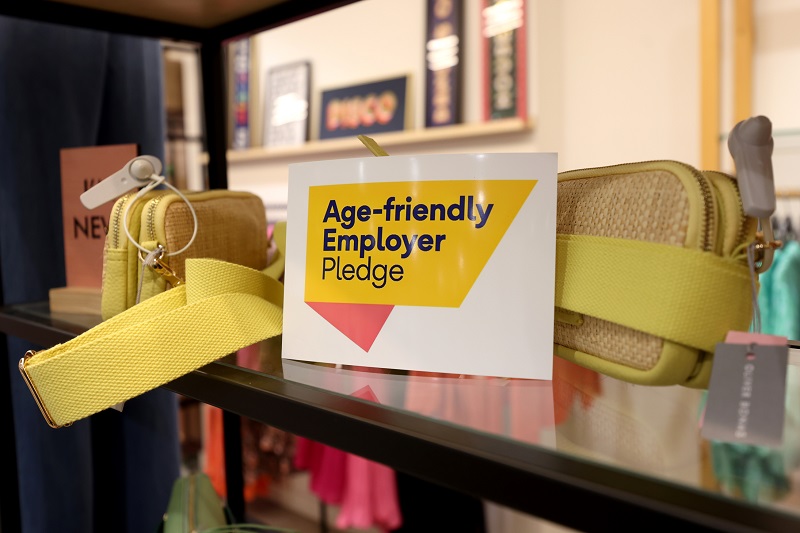The Office for National Statistics (ONS) has released its 2021 disability pay gap findings, and while the disability pay gap has decreased since 2019, there are some interesting variances in gender, age, region, number of impairments and more.
Disability pay gap 2021 – an overview
In 2021, the disability pay gap was 13.8%, meaning disabled employees earned a median of £12.10 per hour while non-disabled employees earned £14.03. This improved from 2019, when the gap was 14.1%, equating to disabled employees earning £10.87 per hour and non-disabled employees £12.66 per hour.
Yet, since 2014 the disability pay gap has widened, where disabled employees’ median earnings were £9.71 per hour, 11.7% less than non-disabled employees who earned £11.00 per hour.
In 2021, disabled employees who were greatly limited in their daily activities had a wider pay gap than non-disabled employees without a long-lasting health condition (19.9%). They also had a wider pay gap than disabled employees, whose day-to-day activities were limited (12.1%).
In terms of occupation, the data reveals that for most main impairment types, differences in occupation contributed to most of the narrowing of the disability pay gap. This backs up previous government data, which showed that disabled employees were less likely to be employed in higher-paid occupations than non-disabled employees.
For example, for disabled employees with “autism as their main impairment type or those with severe or specific learning difficulties”, the pay gap decreased by 13.4% and 15.7%, respectively, when controlling for differences in occupation.
Disability pay gap by region, gender and age
By UK region, Scotland has the highest disability employment gap, with disabled employees’ median pay at £11.54 per hour, 18.5% less than non-disabled employees at £14.16 per hour.
In contrast, Wales has the lowest disability employment gap, where the median earnings of disabled employees were £11.25 per hour, which was 11.6% less than non-disabled employees at £12.73 per hour.
Regarding gender differences, the disability pay gap has been wider for disabled men than disabled women. In 2021, the median pay for disabled women was £11.51 per hour, which was 10.5% less than non-disabled women at £12.86 per hour.
However, the median pay for disabled men was £13.25 per hour, which was 12.4% less than non-disabled men at £15.12 per hour.
Younger disabled employees (aged 16-19) saw their pay gap reduce in 2021 and earned 0.3% less than non-disabled employees. This was a marked improvement from 2014, when they earned 7.7% less. ONS analysis attributes this to changes in minimum wage legislation for this age group.
Impairments
Pay gaps were also determined by the number of impairments reported by disabled employees. For example, disabled employees with one impairment had a median pay of £12.39 per hour, while those with two impairments earned £12.16 per hour, and those with six or more impairments earned £11.30 per hour.
Disabled employees whose main impairment was autism had the widest pay gap compared to non-disabled employees in 2021 at 33.5%, while those with mental illnesses and other nervous disorders stood at 22.1%.
Generally, these pay gaps were higher than those with physical disabilities such as those with problems or disabilities connected to legs and feet (16.1%) and arms and hands (15.3%).
Jill Cotton, Career Trends Expert at Glassdoor said: “The disability pay gap is a sign of missed opportunity. The UK is in the midst of an acute imbalance between labour supply and demand. Employers who think creatively can unlock new talent pools by seeking out overlooked workers such as those with disabilities or health conditions.
“Put simply, more needs to be done. Glassdoor research found a third (32%) of UK workers believe the disability pay gap has become worse during the pandemic. Furthermore, nearly 1 in 2 (45%) feel their company could be doing more to close this gap. Workplace transparency is proven to breed long-term success and levels the playing field for underrepresented groups, such as disabled workers.”
Malcolm Baker, Office manager at Wisbech-based Halo Beauty and Holistic Therapy, and a wheelchair user said: “Unfortunately, and I say this as someone who is in a wheelchair, there is still lots of discrimination in the UK employment sector when it comes to disabled people.
“One favourite line businesses use to not employ disabled people is ‘other candidates were more suitable for the position’, meaning a wheelchair user cannot possibly do a job like selling cars. If a disabled person is hired, it’s normally on a 1-3 month temporary contract as a trial period with the ‘opportunity’ to go full time.
“But generally, because of the needs of disabled employees obviously being greater than that of their more able-bodied colleagues, businesses will often stick with people who won’t require them to make physical adaptions to the workplace.
“If you’re lucky enough to get employed, then comes the holding back of pay rises because the disabled person probably had two incidences of illness and absence. It feels like no one in government gives a second thought to disabled people. Just look at the Personal Independence Payment and how thousands of people are denied things they are entitled to.”
To read the full breakdown of the disability pay gap data, click here.









